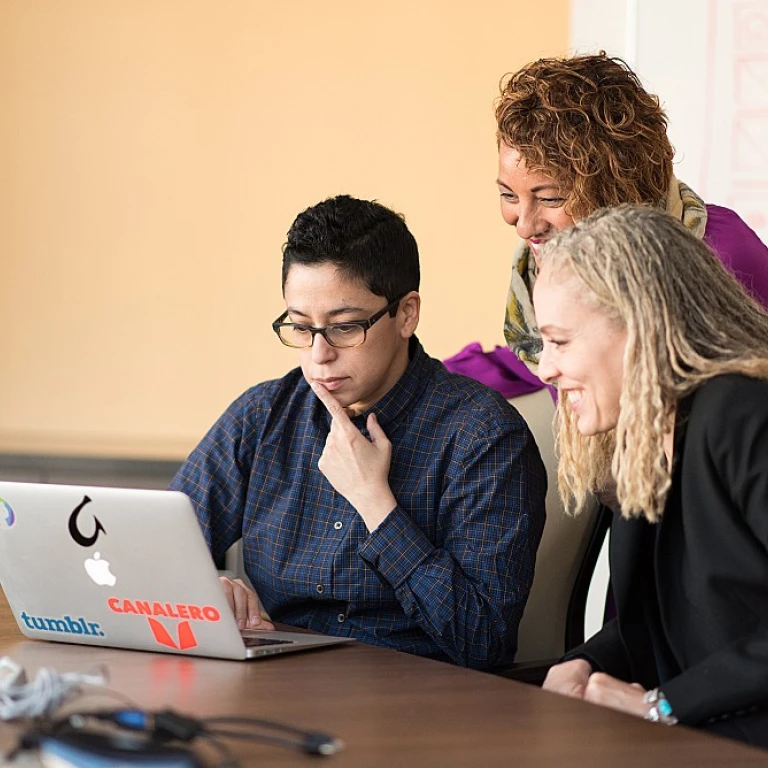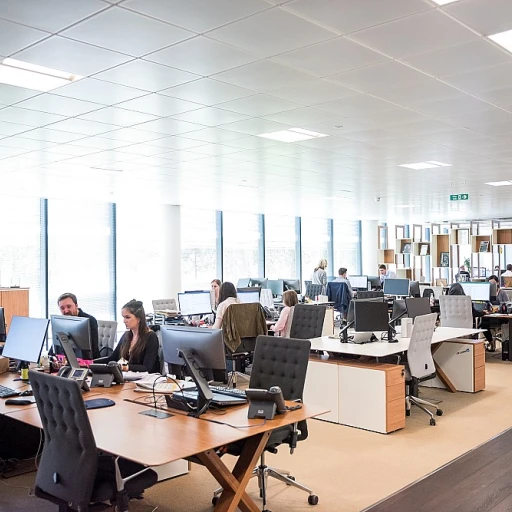Understanding the Current Landscape
The Current Parking and Transit Scene
Diving into the nitty-gritty of office parking and transit services gives us a clear picture of how things stand. In the UK, every office and campus has its own set of challenges and perks. Parking lots are often jam-packed, especially on weekdays, thanks to the influx of students, faculty, and staff. You'll find Monday-to-Friday giving a real bashing to parking space. The juggling act involves parking permits, figuring out where to park, and when to pay for event parking. Outstanding parking services are those that provide options, from a dedicated lot for student parking to preferential slots for faculty staff. Ensuring everyone gets a fair go is the life and soul of a good parking setup. In the mix, alternative transportation options like transit services, bikes, and scooters are gaining popularity. They're supported by staff who are ready to assist during office hours if you’ve got a broken bike or a scooter stuck in second gear. Not to forget, parking citations keep unruly parking behaviour in check. It's a system that works in tandem with rules and regulations established by each university or office, ensuring that your license plate isn't caught in the crossfire. For businesses wanting to stay ahead, boosting efficiency, like enhancing office space utilization in UK companies, can often intersect with transportation strategies. Having a good feel of the parking and transit situation today not only helps in planning but also sets the stage for more innovative solutions down the line.Innovative Parking Solutions
Clever Parking Solutions: Making the Most of Every Space
Revamp your parking setup with a few smart approaches that benefit everyone involved. As office managers in the UK, we need practical ideas to ensure our campus parking fits in with busy lifestyles. There are several parking transportation options to explore that could benefit not just staff but faculty and students as well.- Permit-based Parking: Allocate spaces efficiently by offering a range of parking permits. Options such as monthly permits or campus-specific passes can cater to diverse needs. Keep in mind the need for hassle-free application processes, whether it's handled online or during office hours.
- Paid Parking Lots: For certain busy locations or events, introducing paid parking can manage demand and ensure availability during peak times. This approach can prevent the common frustration of circling the lot for ages in search of that elusive space.
- Shared Parking Solutions: Encourage carpooling by assigning spaces for those who travel together. It's an effective way to reduce individual vehicle road presence while maximizing campus parking availability.
- Weekend and Special Event Solutions: Consider providing special permits for event parking during weekends or outside usual office hours. This allows a flexible capacity to accommodate visiting students, faculty, and guests.
- Faculty and Staff Involvement: Don't shy away from gathering feedback and ideas from faculty staff who regularly use the parking facilities. They're often the most significant drivers of effective change and improvements.
Sustainable Transportation Options
Eco-Friendly Commute Options
In our quest to make office transportation more sustainable, it's essential to prioritize eco-friendly alternatives. Many UK campuses are encouraging faculty, staff, and students to embrace biking and using scooters. Institutions are even setting up designated bike lanes and racks, promoting a culture of responsibility and green commuting. Additionally, university parking and transportation services offer bike permits, making it easier for employees and students to park their bikes securely on campus. Some offices have even implemented bike-sharing schemes, allowing anyone with a valid license plate registration to access bikes during office hours.Carpooling and Ride-Sharing
Carpooling is another sustainable choice gaining traction. Encouraging carpooling among office staff not only alleviates parking lot congestion but also reduces carbon footprints. Many institutions have designated student parking lots specifically for carpool vehicles, benefiting those with carpooling permits. There are services that facilitate ride-sharing connections for campus parking permit holders, streamlining the process of finding a travel buddy and reducing the number of vehicles required on the road. Ride-sharing apps and platforms can be integrated with office transportation services, making it easy for faculty and students to connect and coordinate travel plans.Using Public Transit
Public transit is a win-win for sustainable city commuting. Offices and campuses can work closely with transit authorities to offer transit passes to employees and students at discounted rates. This serves as a great alternative to driving to the office or campus. Parking at locations with access to efficient public transit also provides flexibility. Offices near bus stops or train stations can arrange designated spaces, easing the transition for those relying on public transport. For more insights into related office enhancements, visit our blog on streamlining office moves with reliable vendors. This article can provide additional knowledge into how strategic planning improves workplace setups.Technology Integration in Transportation
Embracing New Technologies in Transportation
Implementing cutting-edge technology can truly revolutionize how we approach office transport. With the availability of advanced tools, facilitating campus parking and other transportation services becomes more efficient and streamlined. Take parking permits, for example. Offices can adopt a digital system that allows faculty, staff, and students to easily obtain parking permits online, without the stress of waiting in lines during office hours. Digital vehicle registration using license plates can automatically track campus parking spaces, reducing the need for physical check-ins. Additionally, apps can be developed for parking options and parking campus information, integrating transit schedules and alternative transportation routes. Employees can benefit from real-time updates, reducing the time spent searching for a parking lot or waiting for a bus. E-bikes and scooters also serve as great additions to the campus, offering a flexible mode of alternative transit. These can be equipped with GPS technology to ensure efficiency and safety, diminishing the exhaustive search for parking on hectic Monday-Friday schedules. In conclusion, technology is knocking on the door of office management, and with open arms, companies can enhance their parking and transportation systems—not by leaps and bounds but with well-integrated digital solutions. Whether it's student parking or event parking, these tools deliver convenience and satisfaction.Employee Engagement and Feedback
Office Communication and Feedback Process
Maintaining open communication with your employees is the backbone of improving parking and transportation for your office. When it comes to parking on campus, faculty, staff, students, and even visitors often have valuable insights. Their daily experience dealing with parking services and transit can shed light on challenges that might not be visible from a management vantage point. Open office hours specifically dedicated to gathering employee feedback on parking, transportation services, and other related topics can encourage a participative atmosphere. A suggestion box, either digital or physical, can also be a tool for staff to voice their concerns or suggest enhancements. Additionally, conducting regular surveys about everything from the quality of parking permits to the frequency and reliability of campus parking can help you pinpoint areas of improvement. Communication shouldn't be a one-way street. Make sure to provide updates and share how employee feedback is driving changes, like new parking options or alterative transportation measures. Transparency in this process builds trust. Involving diverse groups within the office entails considering the unique perspectives of students, faculty, and office staff about parking permits, parking citations, or vehicle use policies. Understanding how parking permits work across various groups will enable better support and guidance. Also, connect with external partners like bike or scooter companies to bring in alternative transportation options. Reaching out to local transit authorities can be beneficial to enhance simple transit solutions. Remember, successfully engaging with employees on their parking and transportation needs is more than just about accommodating concerns. It's about fostering a collaborative environment where everyone feels a part of the solution process. The future of office transportation is not just about technology or infrastructure, but about the people who use these services daily and ensuring their voices contribute to making every solution better.Future Trends in Office Transportation
Looking Ahead: What's Next in Office Transportation
As we move forward, the future of office transportation is set to be shaped by a mix of technology, sustainability, and evolving employee needs. With the rise of remote work, the traditional 9-to-5 is shifting, and so are the expectations around commuting and parking. Here's a glimpse into what the future holds:
- Flexible Work Hours: The rigid Monday to Friday schedule is becoming a thing of the past. As companies embrace flexible work hours, parking lots and transportation services need to adapt. This means more dynamic parking permit systems and transit options that cater to varied schedules.
- Shared Mobility Solutions: Carpooling, bike sharing, and scooter rentals are gaining traction. These options not only reduce the number of vehicles on the road but also offer a cost-effective alternative for employees. Encouraging these can ease campus parking congestion and promote a greener commute.
- Smart Parking Technology: License plate recognition and real-time parking availability updates are becoming standard. These technologies streamline the parking process, reducing the hassle of finding a spot and minimizing parking citations.
- Increased Focus on Sustainability: With a growing emphasis on reducing carbon footprints, alternative transportation methods like electric vehicles and public transit are being prioritized. Offices might offer incentives for employees who opt for eco-friendly commuting options.
- Enhanced Employee Feedback Mechanisms: As discussed earlier, engaging with faculty, staff, and students through regular feedback can help tailor transportation services to better meet their needs. This ongoing dialogue ensures that transportation solutions remain relevant and effective.
As we anticipate these changes, it's crucial to stay informed and adaptable. By keeping an eye on emerging trends and technologies, office managers can create a transportation strategy that not only meets current needs but is also prepared for future shifts.




-large-teaser.webp)








